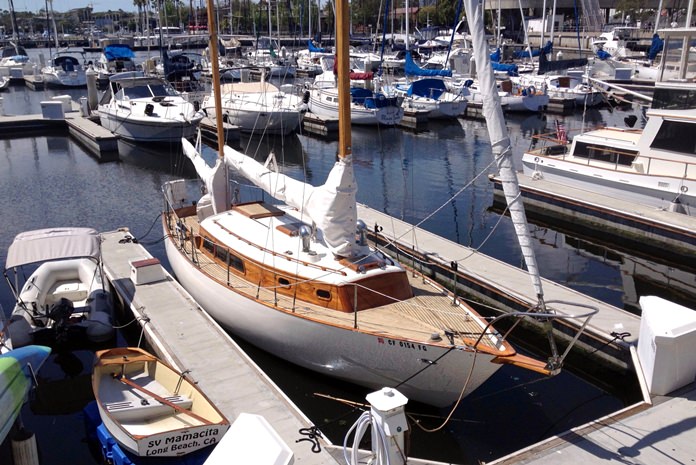If you are a longtime boat owner, you know that owning a boat is a costly affair. Making decisions that keep not only the cost of your initial purchase, but also the long-term cost of ownership, well within you financial means are one of the critical factors of keeping the pleasure in boating. It’s very hard to enjoy your boat when it becomes an unexpected drain on your financial resources. If you’re buying your first boat, or are making a considerable step up in size, the following are some important points that should be carefully considered to help you achieve maximum enjoyment from your purchase.

Initial Cost
One of the most important considerations is keeping the total cost of your purchase well within your financial means. One of the considerations often overlooked when purchasing a new boat is what the vessel will be worth a few years later in the event that you suddenly need to liquidate. We all know that the moment we drive a new car out of the dealership, it immediately loses 25% or more of its value. And although the immediate depreciation rate of most new boats is not quite so bad, the owner of a newer vessel is going to take a hit in the event that he has to suddenly sell.
Quality -vs- Quantity
We seem to be living in an age when price and quantity are more important to consumers than quality. First time buyers in particular are often more interested in finding the largest size vessel for the least cost. This is a mistake. Boats float in a very corrosive fluid: sea water. Added to the corrosive effects of sea water are the effects of sunlight, rain and the rough conditions of oceans. In other words, boats float in a rather hostile environment, a factor that should make getting the best quality for the money a primary consideration.
Increasingly, boat builders are succumbing to marketing fads, sacrificing quality for appearance, style over safety and function. More and more builders turn to designers of fashion in an effort to snare the inexperienced into keeping up with the Joneses with the latest stylistic offerings. Succumbing to style over substance can be a costly mistake when a few years later the trendy design is out of style and all that showroom glitz and gloss turns to rot and rust under the effects of the harsh marine environment.
There is no more instructive exercise than by taking a tour through a marina or boat yard and observing what boats look like after they’re a few years old. Their age can be easily determined from the hull number on the stern. Take a look at how those glittering showroom finishes are holding up in the real world. Has the gel coat turned chalky after only a few years? And what about those fancy graphics? Is the paint fading or is the taped-on feature striping peeling? How about molded plastic parts: are there numerous plastics that are cracked, chipped or broken? Look out for plastic trim and particularly window moldings. Are they painted and is the metal under the paint starting to corrode? Look at the hardware. Is it quality stainless steel, or cheap cast aluminum or “pot metal” parts that are corroding badly? Is some of the hardware painted and the paint starting to come off?
Check out the rub rails, for here is one of the better gauges of quality. Are the rails all bent up, loose and distorted, or are there numerous cracks along the hull-to-deck joint? If so, this is a prime indication of poor quality and that the boat is likely to leak excessively, resulting in damage to the interior. Are the outsides of the window frames smeared with caulking, indicating leaking windows caused by a weak and flexible structure? Does it have window frames intended for recreational vehicles, made of non-marine aluminum?
One of the more insidious side effects of poorly constructed boats is water leaks into the interior. We have seen the interior of a 5 year old boat be completely ruined after the owner couldn’t stop the leaking, despite numerous attempts. The fact that the entire interior is upholstered didn’t help.
And what about styles du jour, the marine equivalent of the bubble car? Are you willing to invest $150,000 in a brief fashion statement that, in a few years, will leave you holding the bag because the style is passing when you go to sell? Are the decks so rounded that you cannot possibly stand up on them?
Is the open cockpit the equivalent of leaving the 1972 Cadillac convertible outside with the top down, an upholstered lounge sitting out in the rain, salt and sun? How is all that vinyl covered plywood and plastic going to look a few years hence?
This is one of the best ways that I know of to find out how any particular builder’s models will hold up over time. Remember that inferior materials such as molded plastics, vinyl’s, plywood decals, cast aluminum and other painted metals can rapidly degrade, and once degraded cannot be restored. Poorly constructed boats are a lot like particle board furniture: once it deteriorates, there’s no bringing it back. The costly investment turns into a painful loss. Remember that the reason why quality boats like Catalina, Swan, Tiara, Oyster and Viking cost so much is because of the quality materials that go into their construction. There’s a good reason why they don’t put interiors on the exterior! A 20 year old Catalina can still be easily resold because its quality components have not turned to dust. If you want to avoid taking a big hit on resale, remember that the glitz and glitter today is less important than how your purchase will look at the time you go to sell.
NB: In part 4 of the guide next week we cover the pros and cons of buying new vs. used, older vessels and the cost of ownership.



